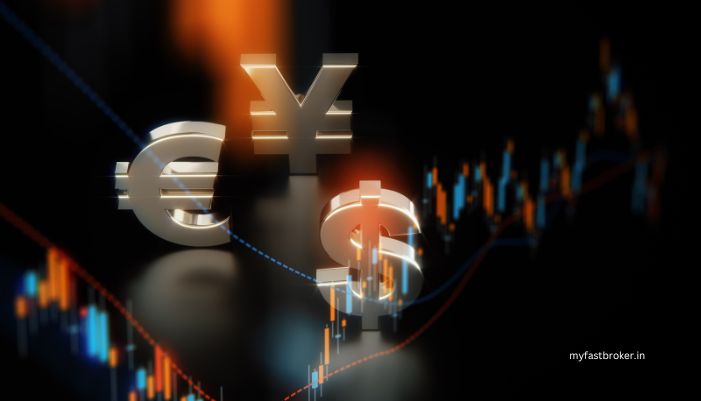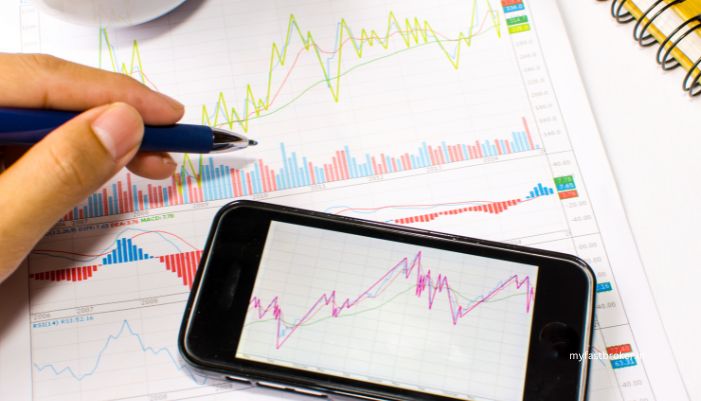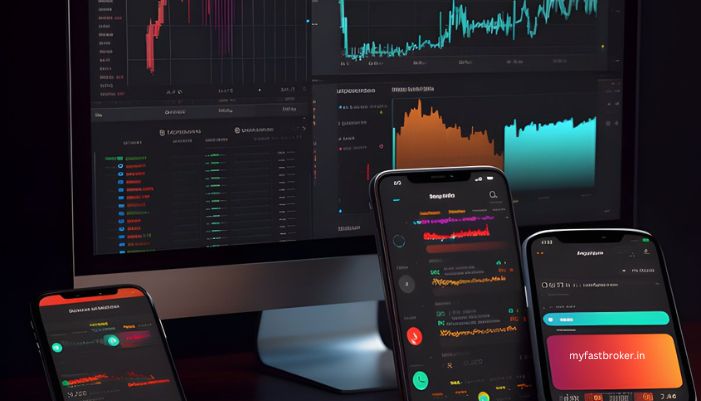Forex trading, or foreign exchange trading, is a popular way to invest. It involves trading one currency for another, like swapping US dollars for euros. The goal is to make a profit when the exchange rates change. While the idea might sound complicated at first, once you understand the basics, you can dive in with confidence.
Forex trading is huge. It’s the largest financial market in the world, with people trading trillions of dollars every day. The market is open 24 hours a day, five days a week. This makes it different from stock markets, which usually close after a set time. Forex allows traders to work on their own schedule and from anywhere.
In this article, we’ll explain the basics of forex trading, how to get started, and what steps you need to take to become a successful trader. Whether you’re looking to make extra money or explore new investment opportunities, learning how to trade forex could be a great option.

What Is Forex Trading? Understanding the Basics
Forex trading is simple in theory: you buy one currency and sell another. You might have heard about currency pairs, such as EUR/USD, which shows the relationship between the Euro and the US dollar. When you trade, you bet on which currency will become stronger or weaker compared to the other.
Currency pairs come in two main categories: major pairs and minor pairs. Major pairs involve the most traded currencies like the US dollar, Euro, and Japanese yen. Minor pairs involve less commonly traded currencies but still have plenty of market interest.
To make money in forex, you need to be able to predict whether a currency pair will rise or fall. This involves studying charts, using technical indicators, and sometimes analyzing news events. The idea is to buy low and sell high (or sell high and buy low) to make a profit.
Forex is a global market, with currencies from all over the world being traded. However, it’s important to remember that prices can change quickly, so there’s always a risk involved. If you’re not prepared, you could lose money just as easily as you could make it. That’s why understanding the market is key.
How to Start Forex Trading: A Step-by-Step Guide
1. Learn the Basics of Forex Market
Before jumping into trading, take time to learn the basics of the forex market. Understanding how currency pairs work is crucial. Currency pairs are written as two letters, like EUR/USD or GBP/JPY. The first currency in the pair is called the “base currency,” and the second is the “quote currency.” The exchange rate shows how much the quote currency is needed to buy one unit of the base currency.

Another key concept is leverage. Leverage lets you control a larger position than your initial deposit. For example, with 10:1 leverage, you could control $10,000 with just $1,000 of your own money. While this can increase your potential profits, it also increases the risk of losses. Start small and use low leverage until you’re comfortable.
Choosing a good broker is also vital. Brokers are intermediaries between you and the forex market. They offer trading platforms, tools, and access to market data. Make sure the broker you choose is reliable, well-regulated, and easy to use.
2. Choose the Right Forex Broker
Finding the right forex broker is one of the first steps in your trading journey. Not all brokers are created equal. Some might offer better spreads (the difference between buying and selling prices), while others provide advanced trading tools. When choosing a broker, consider the following:
- Regulation: A regulated broker is more trustworthy and ensures that your money is safe. Look for brokers regulated by top financial authorities like the UK’s FCA or the US’s CFTC.
- Trading Platform: The platform is where you’ll do most of your work. Popular platforms like MetaTrader 4 (MT4) and MetaTrader 5 (MT5) are easy to use and offer many tools to help you analyze the market.
- Customer Service: Good customer support is crucial if you ever run into issues. A broker with 24/7 support is ideal, especially since forex trading happens around the clock.
- Fees and Spreads: Brokers charge a fee for each trade. These can be flat fees or based on the spread. Look for a broker that offers competitive rates, especially if you plan on trading often.
3. Open a Demo Account
It’s a great idea to open a demo account before you start trading with real money. Most brokers offer demo accounts where you can trade with virtual money. This gives you the chance to practice and learn how the platform works without any risk.
On your demo account, try out different trading strategies, experiment with market orders, and see how currency pairs move in real-time. A demo account also lets you become familiar with how to place stop-loss orders, which automatically close your trade if the price moves against you by a set amount. This is an important risk management tool.
Spend as much time as you need on a demo account. Many new traders make the mistake of rushing into real trades too soon. Take your time, learn the platform, and build your confidence.
4. Start With a Small Investment
Once you’re ready to begin trading with real money, start small. Even experienced traders only risk a small percentage of their total capital on each trade. For beginners, a good starting point might be $100 to $500. This allows you to learn without risking too much.
When starting with a small amount, it’s also important to trade in smaller lot sizes. A standard lot is 100,000 units of the base currency, but many brokers offer mini and micro lots (1,000 or 100 units). These smaller lots let you control your exposure while learning the ropes.
Trading small amounts in the beginning also helps you avoid big losses if things don’t go as planned. Remember, forex trading is a skill, and it takes time to become proficient. Don’t rush to make large profits at the start.
5. Develop a Trading Strategy
Successful forex traders have one thing in common: they all have a plan. Trading without a strategy is like driving without a map. A solid strategy helps you stay focused and avoid impulsive decisions. Here are some strategies that traders use:
- Day Trading: This involves opening and closing positions within the same day. Day traders focus on short-term market movements, often using technical indicators like moving averages and RSI (Relative Strength Index).
- Swing Trading: Swing traders hold positions for several days or weeks, trying to profit from medium-term price movements. They use a combination of technical and fundamental analysis to identify trends.
- Scalping: Scalpers make many small trades throughout the day, often holding positions for just minutes. This strategy requires quick decisions and high concentration.
Choose a strategy that fits your personality and lifestyle. If you have a full-time job, day trading might be challenging. But swing trading could fit into your schedule better, as it requires less time spent in front of the computer.
6. Risk Management Is Key
Managing risk is one of the most important aspects of forex trading. The goal is not only to make profits but also to protect your capital. Here are a few tips for managing risk:
- Use Stop-Loss Orders: A stop-loss order automatically closes your trade if the price hits a certain level. This helps you limit potential losses.
- Never Overleverage: Leverage can amplify both profits and losses. It’s tempting to use high leverage, but starting with lower leverage will protect your funds.
- Diversify Your Trades: Don’t put all your money into one trade or one currency pair. Diversifying reduces the overall risk.
Risk management is crucial for long-term success in forex trading. Even experienced traders use strategies to minimize risk and protect their capital.
7. Keep Learning and Stay Updated
Forex trading is an ongoing learning process. The market is constantly changing, and staying informed is key to success. Follow financial news, read books on trading, and join online communities where you can share tips with other traders.
In addition to staying informed, continue refining your trading strategies. Every trader has a different approach, and the more you practice, the better you’ll become. Keep a trading journal to track your successes and failures. This helps you learn from your mistakes and improve over time.
Conclusion
Forex trading can seem overwhelming at first, but with the right knowledge and tools, anyone can get started. Begin by learning the basics, choose the right broker, and practice with a demo account before trading with real money. Keep your risk low, stay patient, and continue learning. Over time, you’ll become more confident and skilled in your trading.
Are you ready to start your forex trading journey? Open a demo account, learn the basics, and begin practicing today. The world of forex trading is open to everyone—take the first step now!
FAQs About Forex Trading
1. How much money do I need to start forex trading?
You can start with as little as $100, but it’s best to start small and build your way up as you gain experience.
2. Is forex trading risky?
Yes, it can be risky, but with good risk management and careful planning, you can minimize potential losses.
3. Can I trade forex without any experience?
It’s best to practice on a demo account first to get comfortable with the platform and trading strategies.
4. What is the best time to trade forex?
The forex market is open 24 hours, but it’s best to trade when major markets like London and New York are open for higher liquidity.
5. Can I make a full-time income from forex trading?
Yes, many traders do, but it takes dedication, experience, and a solid strategy to be successful in the long run.



